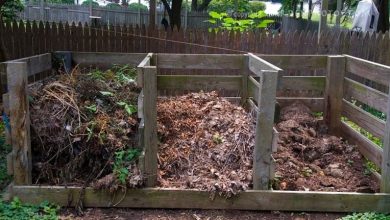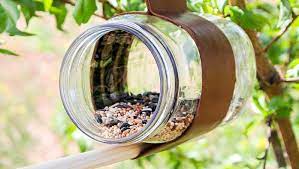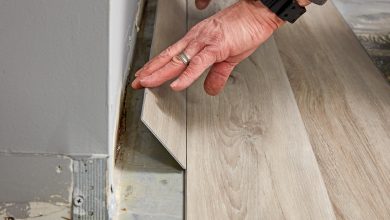Building Your Own Greenhouse on a Budget
Have you ever dreamed of growing your own fresh vegetables, herbs, and flowers but didn’t have the space or budget for a traditional greenhouse? Building a DIY greenhouse is an affordable way to turn that dream into a reality.
DIY Greenhouse Kit
For those wanting the easiest greenhouse option, a DIY kit is a great place to start. Kits come with all the major frame components pre-cut, so it’s just a matter of assembling and securing the parts. While not as budget-friendly as a fully homemade option, kits still allow you to save compared to a pre-built greenhouse.
One popular kit choice for Aussie gardens is the UltraGreenhouse kit. Ranging from 2×4 meter to 6×8 meter sizes, these plastic-covered kits provide plenty of growing space without breaking the bank. The plastic panels are sturdy yet lightweight and easy for one person to install. Extension kits are also available if you want to increase the size down the line. Assembly takes a few hours, and basic tools and the panels have a 10-year warranty. Retailing around $500-$1500 depending on size, an UltraGreenhouse kit is a hassle-free way to start nurturing plants year-round.
DIY Greenhouse PVC
For the more adventurous DIY-ers, constructing your own frame from PVC piping can shave even more money off the cost. PVC piping is inexpensive, readily available from hardware stores, and simple to work with using basic cutting and joining techniques. The main structure employs horizontal and vertical PVC pipes connected with elbow joints and couplers. Plastic sheeting or shade cloth is then secured to complete the enclosure.
A basic design for a medium-sized 3×4 metre greenhouse utilizes 20mm diameter piping. You’ll need eight vertical posts cut to 1.8 metres, 16 horizontal beams cut to 3 metres and 4 metres respectively, and various 90-degree elbow joints and couplers. Drill holes in the posts and secure the horizontal pipes with ties or cable ties. Screw eye bolts or rope cleats onto the posts to anchor plastic sheeting. Total materials should run under $200.
For a more sturdy long-lasting structure, use 25mm piping instead of 20mm. Or upgrade joints to mechanically connected compression fittings instead of pressed couplers for added strength in high wind regions. Factor in extra time for precision cutting and joining of pipes. The result is a fully custom DIY greenhouse for a fraction of the cost of pre-built options.
DIY Mini Greenhouse
Not everyone has the space for a full size greenhouse. If you’re tight on yard area, consider a mini greenhouse that can still accommodate small plants, seedlings and herbs. Mini greenhouses provide all the benefits of a larger version in a more compact design.
A simple DIY mini greenhouse out of PVC piping measures only 1.5×1 metres yet makes the most of a tiny footprint. Cut four 1.8 metre posts and connect them at the corners with fittings to form a square base. Cut crossbeams to span each side and attach with cable ties. Then, add a center beam running lengthwise down the middle for extra support. Cover the frame with clear plastic or shade cloth and anchor the edges with weights.
For an even more miniature project, try using sturdy garden stakes as posts connected with horizontal bamboo skewers lashed together with twine or zip ties. Cut plastic soda bottles half lengthwise and secure them to the frame to form sloped walls. These mini versions provide the perfect protected space for starting seedlings or housing a few potted herbs on a balcony or deck.
DIY Indoor Greenhouse
Not every gardener has a yard, either. If growing space is limited to indoors, you can still enjoy the benefits of a greenhouse effect. An indoor greenhouse allows you to extend the seasons and get a head start on summer crops before planting outside. Best of all, it takes up minimal floor space.
A basic but effective indoor greenhouse design uses a large clear storage bin or kiddie pool lined with plastic sheeting as the foundation. Cut PVC piping or sturdy wooden dowels to span the top opening and secure plastic sheeting to form a tent-like roof. Add a door flap for easy access. Place plant pots inside and position them near a sunny south-facing window for optimal light exposure.
Alternatively, construct a free-standing frame out of PVC pipes in an A-frame or hexagon shape and cover it with double-layered plastic sheeting secured with duct tape. Place the frame on top of a table or shelf for ventilation underneath. Equip with a clip-on grow light suspended above for supplemental lighting during low-light seasons. The flexible indoor greenhouse allows for the cultivation of seedlings, herbs, and greens all year from even the smallest of indoor spaces.
How to Build a Cheap Greenhouse Step-by-Step
Now that we’ve covered some greenhouse framework options to suit different budgets, let’s go through the step-by-step process of building a basic yet practical backyard greenhouse on a tight budget. This design uses a wooden frame for durability and versatility in shape and size.
Materials Needed:
- Wood boards or timber posts for framing (untreated pine works well)
- Wood screws or nails
- Clear plastic sheeting
- Optional: Shade cloth, rope, wood stain/sealant
Steps:
- Decide on your greenhouse dimensions. A standard size that fits most Australian yards is 2m x 3m. Mark out your footprint on a level ground surface.
- Cut vertical wooden posts to 1.8m lengths and hammer into the ground at each corner, spaced evenly apart to match your dimensions.
- Cut horizontal perimeter beams and crossbeams to span each side and space them evenly between posts. Secure the beams by screwing or nailing them to the posts.
- Repeat the last step to add a second layer of horizontal supports halfway up the posts to create shelving. Reinforce the corners with angled support beams for stability.
- Cover the frame by draping plastic sheeting across and securing it along the bottom perimeter with rope or strips of wood buried shallowly in the soil.
- Use ropes tied off to posts or balustrades to pull the plastic sheeting taut along beams and hem the air pockets underneath.
- Add optional extras like vents, a doorway and shading based on your design preferences. Finish by applying a wood protectant sealant if desired.
With these basic steps and minimal materials, you’ll have your own low-cost greenhouse operational to nurture plants year-round. Over time you can improve and expand the design as your gardening abilities and budget allows. But even a simple starter design like this serves the function of extending the growing season when you’re working on a tight budget.
FAQ About Building a DIY Greenhouse
Now that we’ve covered the main DIY greenhouse-building techniques and methods, here are answers to some frequently asked questions:
How much does it cost to build a cheap greenhouse?
Basic 2m x 3m wooden-framed greenhouse as described above:
- Woods and hardware: $100-150
- Plastic sheeting: $50-80
- Total: $150-230
A DIY kit greenhouse ranges from $500-1500, depending on size. A PVC pipe frame structure costs $100-300, depending on materials grade.
What is the most expensive part of a greenhouse?
For a wooden-framed greenhouse, the most costly components are usually the wood beams and posts, depending on the material and size needed. Name-brand plastic sheeting suitable for greenhouse use also adds up versus generic sheeting. Over time, replacement panels drive up the ongoing costs.
What grows best in a greenhouse?
Greenhouses excel at cultivating:
- Tomatoes, capsicums, eggplants – Warm weather crops thrive
- Herbs like basil and parsley – Perfect for frequent picking
- Salads, lettuce, microgreens – Grow year-round
- Seed starting – Get a head start on summer veggies
- Tropicals – Spice up your yard with ginger, lemon grass
- Flowers – Blooms extend growing season
Do cheap plastic greenhouses work?
Budget plastic greenhouses absolutely have their place if constructed properly. Thicker premium plastics rated for UV exposure last longer versus generic sheeting that degrades faster in sun. Regular replacement and adding shade cloth under plastic extends product lifespan. With routine care and management, inexpensive options grow delightful crops too.
What can I grow in a greenhouse for beginners?
Easy greenhouse crops for novices include cherry tomatoes, mini capsicums, bush beans, basil, lettuce, microgreens, strawberries and herbs like rosemary and thyme. Focus first on fast growing crops that provide quick rewards while mastering greenhouse growing techniques. Avoid more finicky plants until gaining experience.



